
Sudo Rm Rf Don't Try This At Home TShirt Yesweli
Key Takeaways. >The rm command lets you delete a file or directory passing its name: "rm filename" or "rm -d directory." You can include a directory path, too. If there are files in the directory, use the -r option "rm -r directory" to delete files and folders recursively. The Linux rm command deletes files and directories.
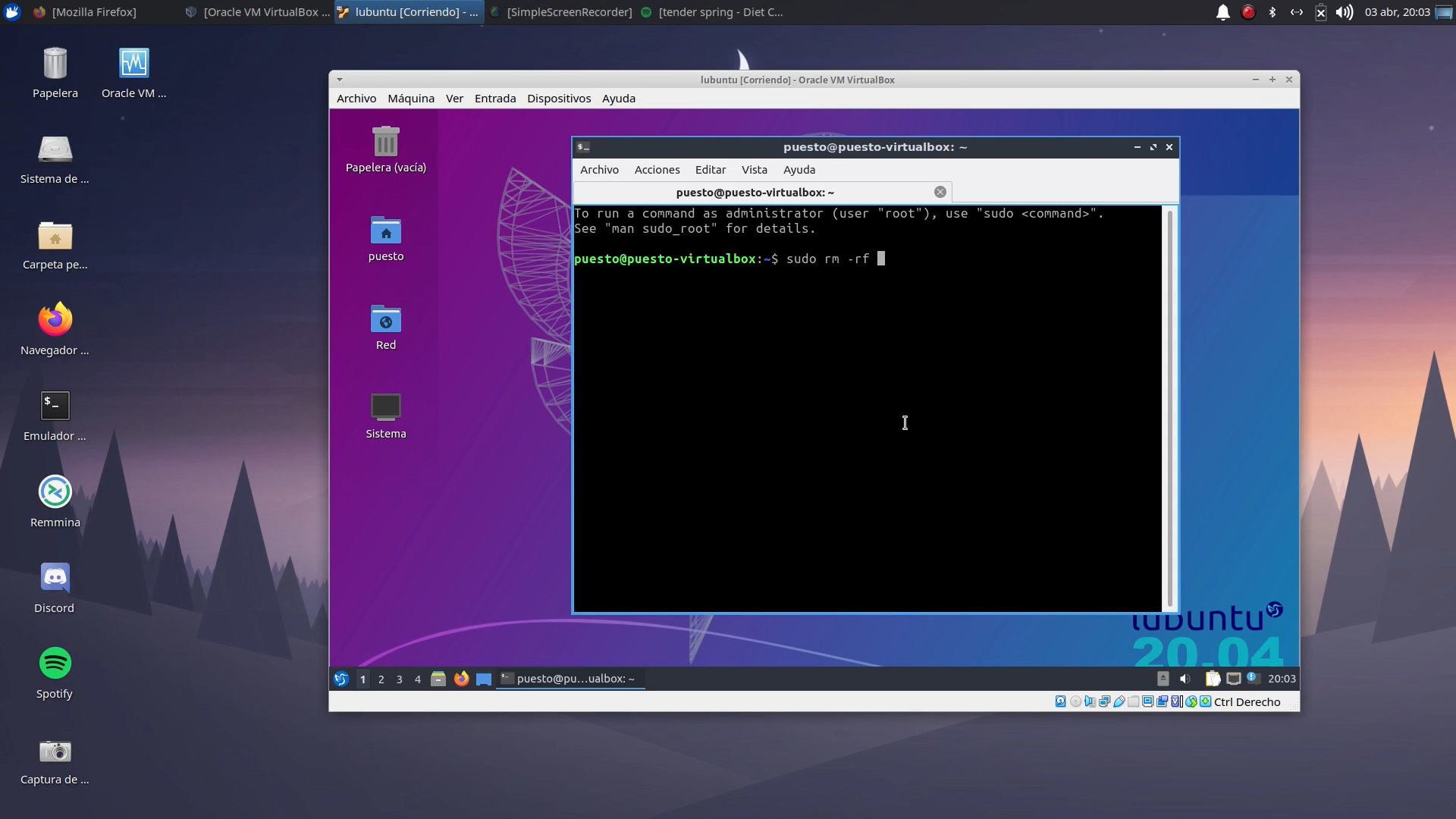
sudo rm rf / (Vídeo) nosololinux
The rm command removes complete directories, including subdirectories and files. The rmdir command removes empty directories. It is important to note that the rm and rmdir commands permanently remove directories without moving them to the Trash directory. This means that you cannot restore a directory removed using these commands.

"Sudo rm rf / * computer programmer terminal" Sticker for Sale by anziehend Redbubble
The sudo rm -rf command is often avoided by users and cited as a dangerous command. The command syntax is: sudo rm -rf

Sudo rm rf / Sudo Sticker TeePublic
Now coming to 'sudo rm -rf /'. You know that with sudo, you run a command as root, which allows you to make any changes to the system. / is the symbol for the root directory. /var means the var directory under root. /var/log/apt means apt directory under log, under root. As per Linux directory hierarchy, everything in a Linux file system.

Sudo rm rf Hoodie CrazyMonk
What does ' sudo rm -rf /* ' do? Ask Question Asked 2 years, 6 months ago Modified 1 year, 4 months ago Viewed 25k times -4 I ran this command on Fedora, which I anyway wanted to uninstall, so I decided to check out this command: sudo rm -rf /* just for fun.

Unix & Linux Command "sudo rm \" hangs want to ensure no damage was done to system YouTube
In short, the sudo rm -rf / command deletes everything in the root directory, which basically breaks your whole system. We'll explain the command in detail below. If you don't know what it means or what it does - you should not run it. What does the rm command do?

Linux “sudo rm rf” Command LinuxTect
The command " sudo rm -rf /* " is a powerful command in Unix-like operating systems, including Linux and macOS. It allows users to delete files and directories recursively from the root directory. The root directory contains all essential files and sub-directories that are critical for the operating system to function.
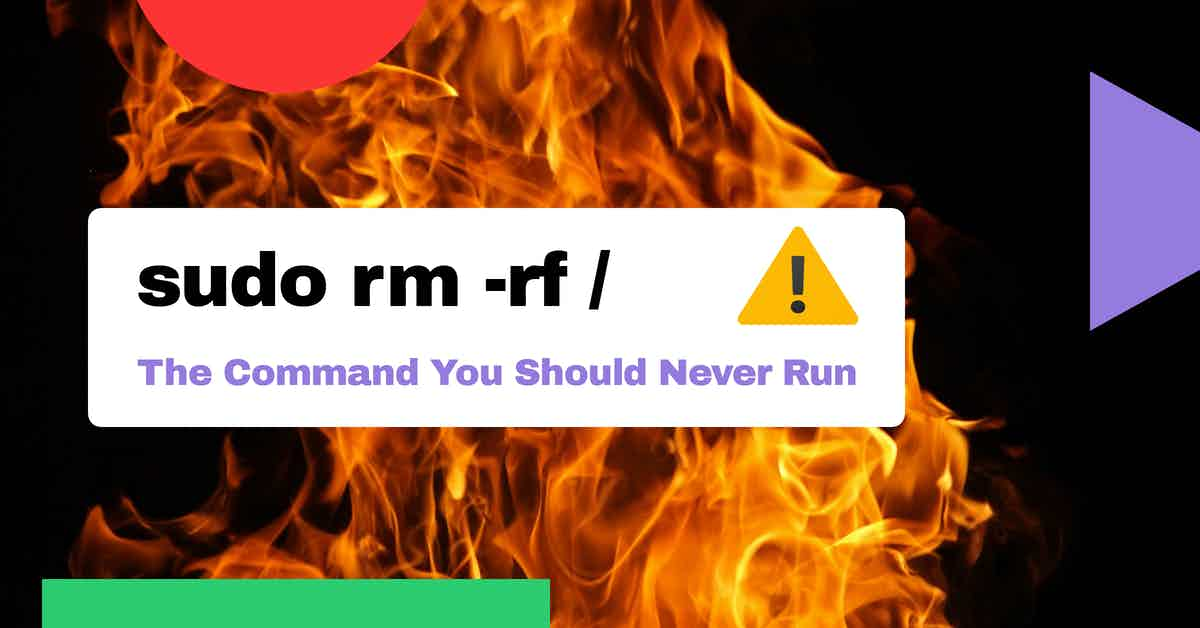
sudo rm rf / The Command You Should Never Run
Sudo rm -rf is a command used to delete files and directories recursively. This means that not only will the specified file or directory be deleted, but all of its contents will also be deleted. This can be extremely dangerous, as it can easily lead to data loss if used improperly.
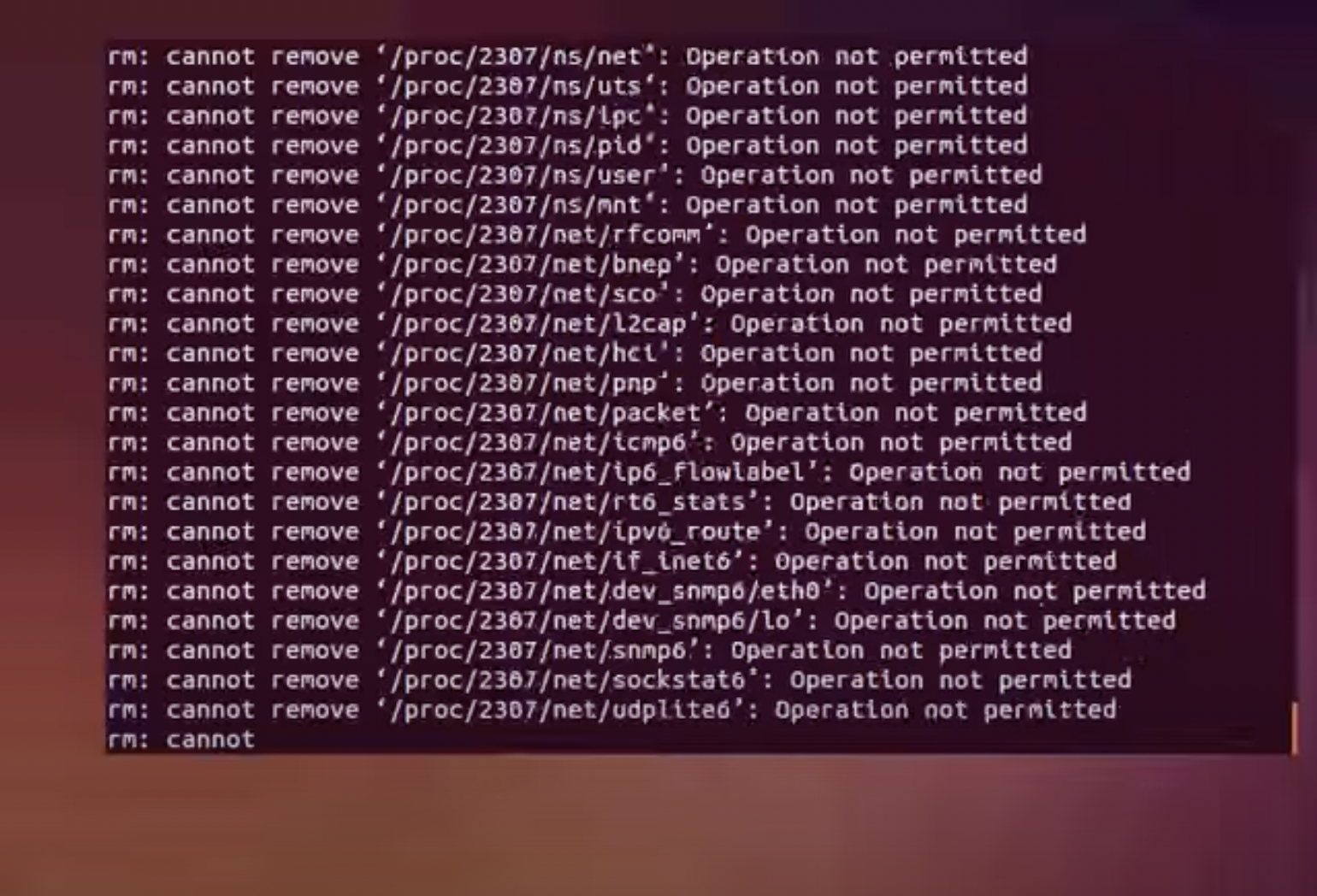
sudo rm rf / === npm install
1. Press CTRL+ALT+T to open the terminal. 2. Establish a subfolder and test directory: sudo mkdir test1 && sudo mkdir test1/test2 The root user is the one who created and owns both directories. 3. Try deleting the directory with standard user rights: rm -rf test1 The message "Permission denied" appears in the output. 4.

Sudo rm rf •
腾讯云开发者社区是腾讯云官方开发者社区,致力于打造开发者的技术分享型社区。提供专栏,问答,沙龙等产品和服务,汇聚海量精品云计算使用和开发经验,致力于帮助开发者快速成长与发展,营造开放的云计算技术生态圈。

Sudo rm Linux Coding Terminal Digital Art by Mister Tee
One of the main points that sudo rm -rf models have brought forward is that focusing only on the reconstruction fidelity performance and ignoring all other computational metrics, such as: execution time and actual memory consumption is an ideal way of wasting resources for getting almost neglidgible performance improvement. To that end, we show that the Sudo rm -rf models can provide a very.
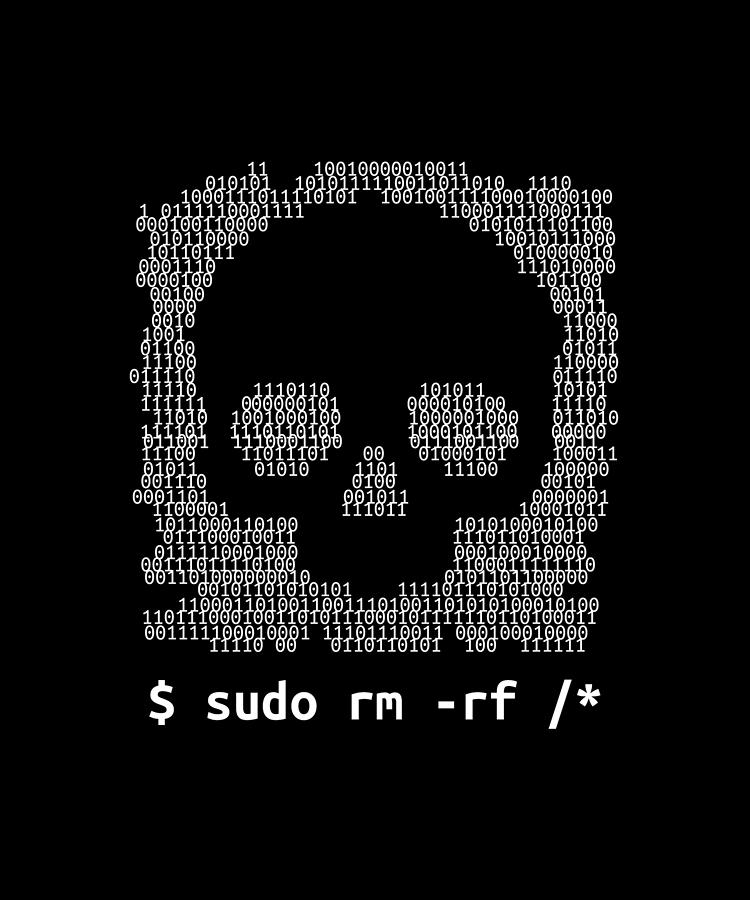
Sudo Rm rf Digital Art by Gulayfather Pixels
When using rm, the feedback from the terminal is minimal when a file is deleted. It is very easy to delete files, meaning you can end up deleting important files by mistake. Here's an example of a particularly scary command: # DO NOT RUN THIS $ sudo rm -rf / # This is just as bad $ sudo rm -rf /*. On Unix systems, the operating system is on.
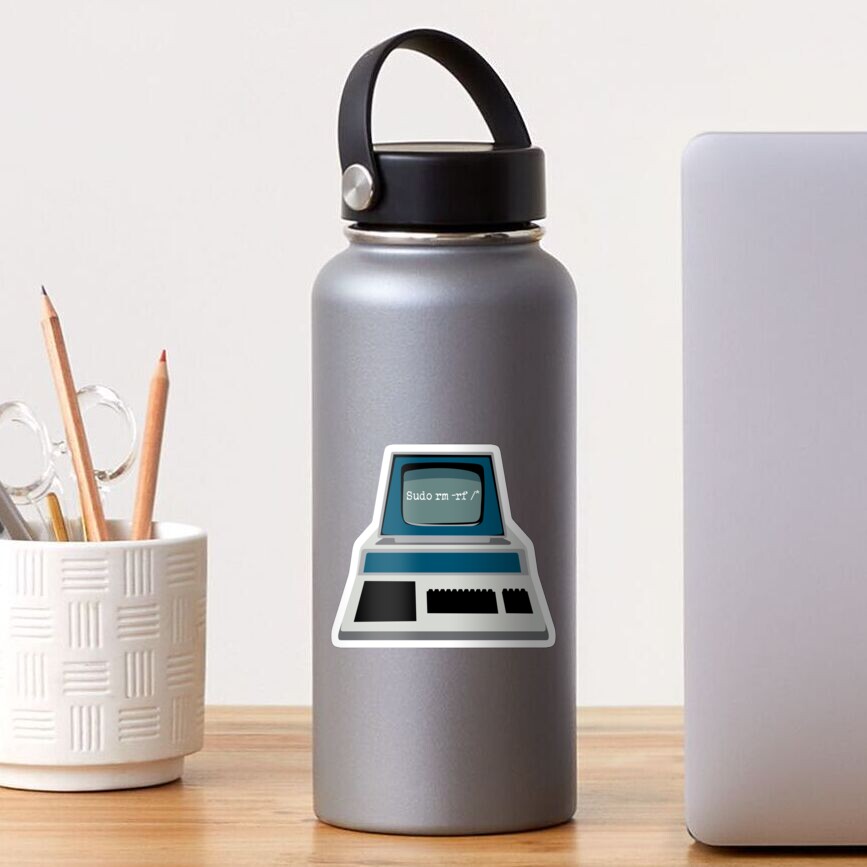
"Sudo rm rf / * computer programmer terminal" Sticker for Sale by anziehend Redbubble
The sudo rm -rf * command is used to delete all files and directories in the current working directory. Even if the files or directories are owned by another user they will be deleted as the "sudo" command provides the root privileges to delete these files and folders. $ sudo rm -rf *.
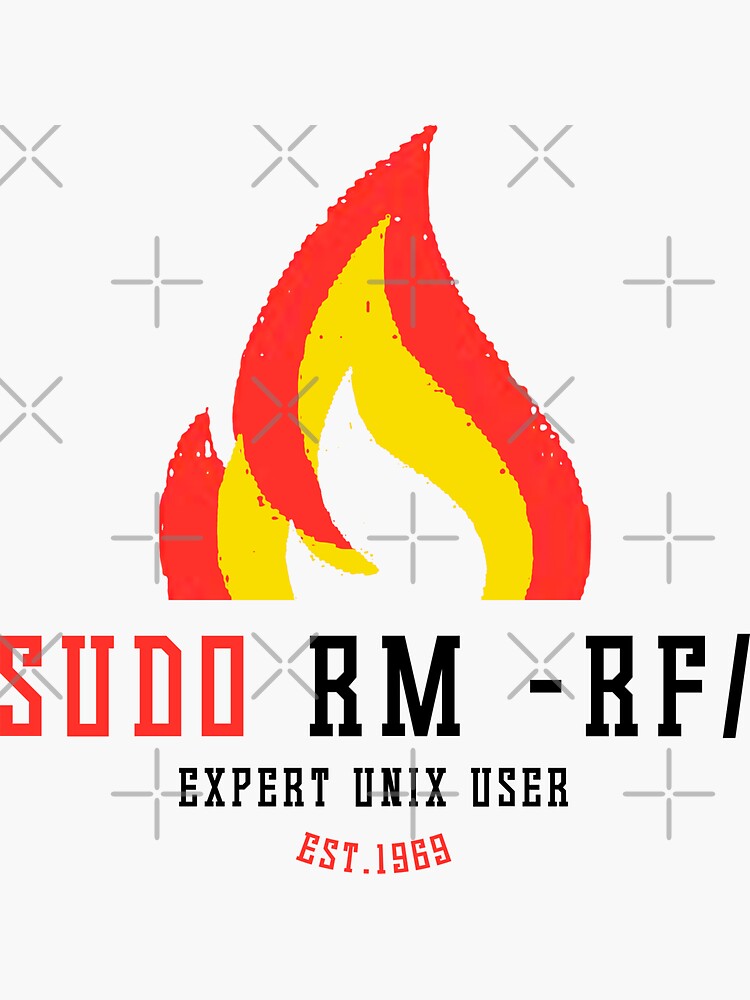
"sudo rm rf/" Sticker by guicsilva Redbubble
What Happens When Using "sudo rm -rf /" and "sudo rm -rf/*" Commands in Linux? How to Create an Alias of the "rm -rf" Command in Linux? What are the Alternatives to the "rm -rf" Command in Linux? How to Install Trash-cli Package? How to Use Trash CLI to Delete the Directory and Restore it From Trash?

What happens when you sudo rm rf / your machine? YouTube
sudo rm -rf: what does it do? Let's learn things in steps. The rm command is used for removing files and directories in Linux command line. abhishek@its-foss:$ rm agatha abhishek@its-foss:$ But some files will not be removed immediate because of read only file permissions. They have to be forced delete with the option -f.

Sudo rm rf don't drink and root shirt, hoodie, tank top, sweater and long sleeve tshirt
Remember from last time that rm removes any files you pass to it. -rf is a concise way of writing -r -f, two options you can pass to rm. -r stands for "recursive" and tells rm to remove.